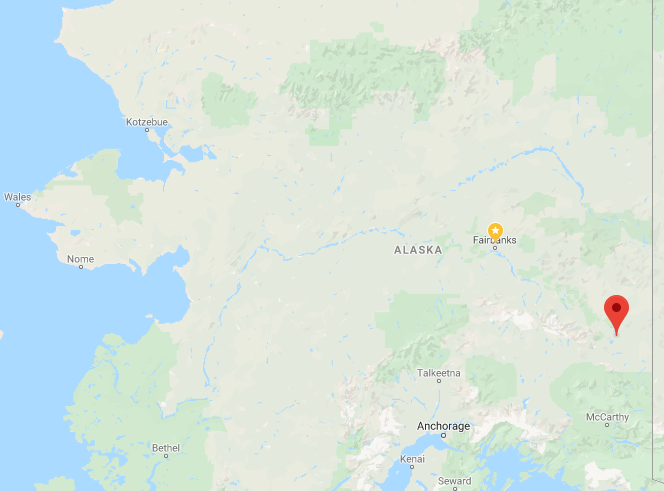Quick Facts
- Pronounced (TET-linn)
- Current Population 118 (2012 Alaska Department of Labor Estimate)
- Legislative Districts (link to State Legislature page):
- Senate District T
- House District 39
- Judicial District 4
- Latitude: 63.1372
- Longitude: -142.5161

Location
Tetlin is located along the Tetlin River, between Tetlin Lake and the Tanana River, 20 miles southeast of Tok. It lies in the Tetlin National Wildlife Refuge. The village is connected by road to the Alaska Highway.
Climate
Tetlin lies within the continental climatic zone, with cold winters and warm summers. In the winter, cold air settles in the valley and ice fog and smoke are common. The average low during January is -32 °F; the average high during July is 72 °F. Extreme temperatures have been measured from -71 to 99 °F.
History
The semi-nomadic Athabascan Indians have historically lived in this area, moving with the seasons between several hunting and fishing camps. In 1885, Lt. H.T. Allen found small groups of people living in Tetlin and, to the south, in Last Tetlin. The residents of Last Tetlin had made numerous trips to trading posts on the Yukon River. In 1912, villagers from Tetlin would trade at the Tanana Crossing Trading Post.
During the Chisana gold stampede in 1913, a trading post was established across the river from Tetlin. When two trading posts were opened in the village during the 1920s by John Hajdukovich and W.H. Newton, residents from Last Tetlin relocated to Tetlin. A school was constructed in 1929, and a post office was opened in 1932. The 786,000-acre Tetlin Indian Reserve was established in 1930. An airstrip was constructed in 1946.
When the Alaska Native Claims Settlement Act (ANCSA) was passed in 1971, the reserve was revoked. Tetlin opted for surface and subsurface title to the 743,000 acres of land in the former reserve.
Culture
The community continues to live a traditional Athabascan culture and lifestyle.
Community profile data provided by the State of Alaska Department of Commerce, Community and Economic Development.
